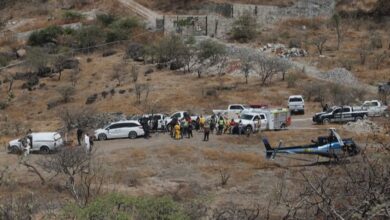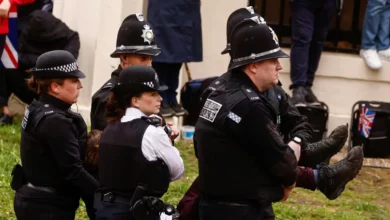The recent church attack in Imbaba and the sectarian clashes that ensued have once again prompted fears of lawlessness in Egypt and raised questions about who is responsible for ensuring public safety. The 25 January revolution, which began as a mass rally against police brutality, came amidst an on-going crisis in the Egyptian police force that had gotten worse over the past several years. As a result, the revolution’s success will be measured in part by how well the police force is reformed in the coming period. But great challenges lie ahead, many of them stemming from the deep structural problems of the Egyptian police that have developed over decades.
Egypt’s police force was set up along a Western model as part of the modernization of the Egyptian state in the late 19th century. Police stations were first established in upper-class neighborhoods, with little or no influence in popular areas where local notables remained in charge of law enforcement through the use of neighborhood thugs. In the countryside, local chiefs were largely responsible for security. Police forces stationed in rural governorates were only summoned in exceptional circumstances as locals were often suspicious of their wealthier backgrounds and different cultural sensibilities. The Egyptian police thus emerged as a force that was largely alien to most parts of Egypt. They held sway mainly in Cairo’s modern districts, built under Khedive Ismail, and some upper-class neighborhoods in Alexandria and Ismailiya.
From the start, all the police’s problems were bound up with the broader problems of modernization. Historically, most commanding officers came from urban middle-class backgrounds, except for a small quota reserved for big families in Upper Egypt. The social background of commanding officers played an important role in shaping their relationship with Egyptian citizens. In a society with a relatively small middle class (that was even smaller prior to Egyptian independence in 1952), the task of commanding officers was not only to repress but to domesticate the poor in accordance with a classist vision of society. They dealt with poor people largely on the basis of suspicion. By and large, police understood that their role was to regulate the relationship between the upper/middle classes and the poor who were considered dangerous threat. The police achieved this by separating out the marginalizing threatening elements from the rest of society. The fact that commanding officers came from “respectable society” entrenched their feeling of being masters of Egypt’s societal order, a sentiment that was bolstered with growing urbanization and the spread of urban poverty.
The gradual modernization of rural areas in the 1950s and 60s meant that village notables lost their traditional role as intermediaries between the state and the local population. As a result, the regulation of the countryside became a primary function of the police. The police was thus forced to penetrate areas whose social composition is radically different from those it protected in the past. This is the context in which the number of rank-and-file police officers employed by the Interior Ministry (known locally as umana’) grew in the 1970s. Many of these officers were educated but came from poorer backgrounds and were paid less than their superiors. By contrast, commanding officers (known locally as zubat) continued to come from middle-class backgrounds, meaning they were unsuitable to penetrate poorer areas which they often scorned. Lower-ranking officers thus played an intermediary role between their superiors and those viewed as “half-citizens” by upper classes.
I’m from a middle-class background and do not recall once having to deal with a commanding officer via an intermediary. I’ve only spoken to rank-and-file policemen to ask for directions. But the majority of Egyptians viewed them as the intermediaries who can relay their concerns to higher-ranking officers, the real masters.
The structural problems of the police force were made worse by Egypt’s deteriorating socio-economic conditions from the 1990s. With declining real wages and rising inflation, middle-class officers who normally earned more than employees in other state agencies could hardly maintain the standard of living of their predecessors. As a result, those officers with enough clout established a monopoly over police academy enrollment, which they controlled through bribery and corruption (the only exceptions were the sons of high-ranking police officials). Meanwhile, training standards deteriorated and many middle-class officers grew more alienated from their work environment.
These developments meant that most commanding officers became even less capable of dealing with lower-class suspects and so increasingly resorted to the excessive use of force. That’s why by 25 January 2011 a great deal of public resentment had built up towards Egypt’s police.
Commanding officers found themselves entangled in corruption and lacking the necessary skills to perform their jobs. Moreover, their only means of exerting pressure on suspects were through violence and condescension based on their people’s social backgrounds. To make up for these deficiencies, police officers forged a dangerous relationship with the world of crime: ex-convicts were increasingly used to extract information for day-to-day crime solving or as thugs (especially since 2005) to bully protesters and dissidents. This was the only way police could continue to function effectively.
As these practices became more widespread, police officers were no longer able to control ex-convicts except through the use of torture, which resulted in physical abuse becoming widespread throughout Egyptian police stations. Torture was not simply a matter of erratic individual behavior; it reflected the problematic institutional relationship between police officers and their militias of ex-convicts that they relied on for everyday police work.
In the aftermath of the 25 January revolution, the structural problems plaguing Egypt’s police force must be addressed in order for police to be effective on the streets. The network of policemen who serve as intermediaries between higher officers and criminals should, for the most part, be dismantled. The police academy’s admission standards must change to give more opportunities to students from poorer social backgrounds as well as recruits from other fields, including law graduates. The goal of such wide-reaching reform would be to ensure that police officers do not once again develop a culture of exceptionalism and look upon the majority of society with condescension. The closed hierarchy that has governed the police force since the British occupation should be left for the armed forces. The police force is a civilian institution that needs to be run with greater transparency and accountability.
These fundamental reforms are the only way to guarantee that other improvements – wage increases, better training, and more sensitivity to human rights – will bear fruit. An overhaul of the current police structure – with all its commanding officers, rank-and-file members, plainclothes police, and convicts – is imperative. It would be the first step towards meaningful security reform that can guarantee public safety and stability in Egypt.
Mohamed Naeem is a member of the editorial board of el-Bosla magazine where an extended version of this article appeared in Arabic.




